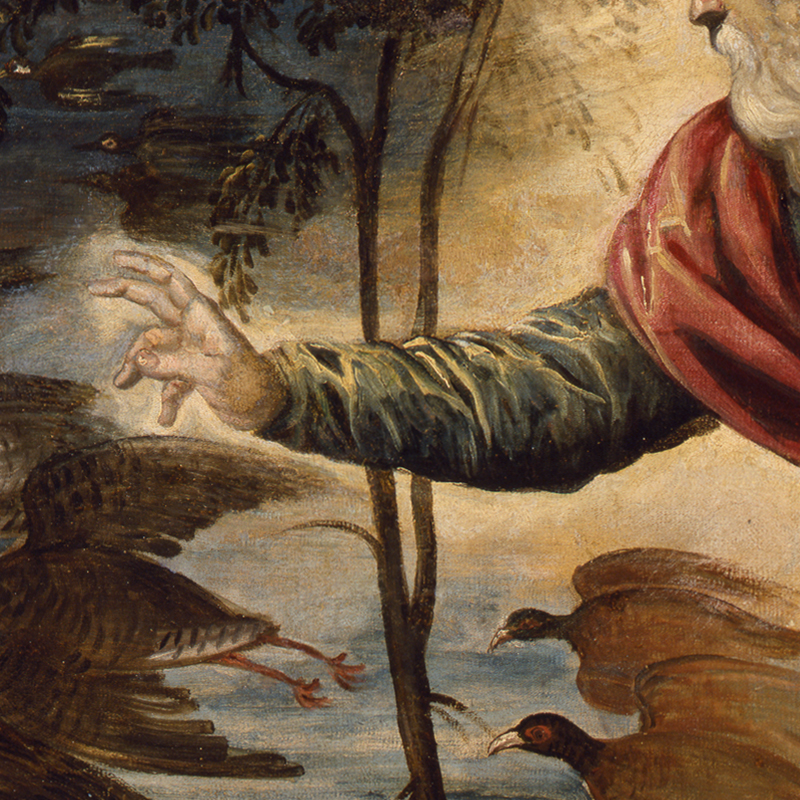
Art has always sought to capture the mysteries of existence, often drawing inspiration from ancient scriptures or mythological tales. One of the certainly most fascinating themes is the creation of the world in art, allowing us to turn our gaze toward the origin of everything: the creation of the world.
In this post I would like to share five iconic works that have interpreted this fundamental theme, spanning different eras and artistic styles.
5 must-know works depicting the creation of the world in art
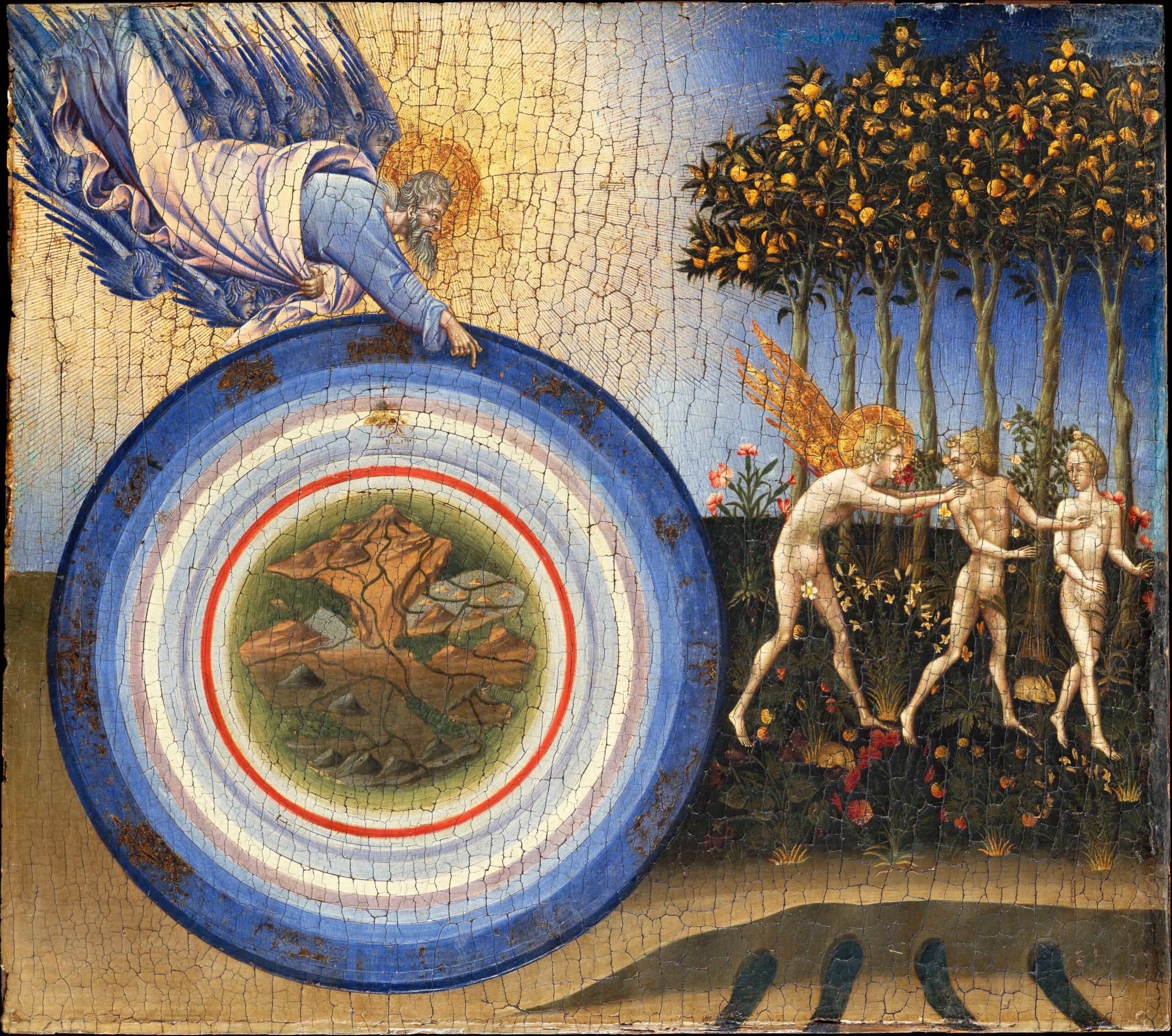
Giovanni di Paolo, la creazione del mondo
The creation of the world, as presented to us in the Old Testament book of Genesis, is not only a religious narrative but has provided a narrative framework that has inspired countless artists. This narrative, with its sequence of divine events shaping primordial chaos, has provided an ideal canvas for exploring themes such as the origin of the universe, the nature of human existence, and the relationship between man and the divine.
Here are 5 masterpieces that tell the story of the creation of the world in art.
1. GIOVANNI DI PAOLO, THE CREATION OF THE WORLD AND THE CATCHING OF ADAM AND EVA FROM PARADISE (c. 1445)
The work created by John of Paul is preserved today at the Metropolitan Museum in New York and depicts two different moments told in Genesis.
On the left we see God the Father , surrounded by twelve angels, pointing the finger of his right hand toward the universe. In this depiction the universe consists of all the spheres indicated by the geocentric-Tolemaic conception, which stated that the heavens were made in layers in which the stars and planets were fixed on orbit-like spheres of different sizes. In the painting, each sphere has a different color.
On the right are Adam and Eve being chased out of the Garden of Eden by a naked angel, while at the bottom are the four rivers of Paradise: Pison, Ghicon, Tigris and Euphrates.
Each element in the work possesses a symbolic meaning. For example, the rosebush woven around an orange indicates the state of innocence in Paradise, while the lily is the symbol of purity.
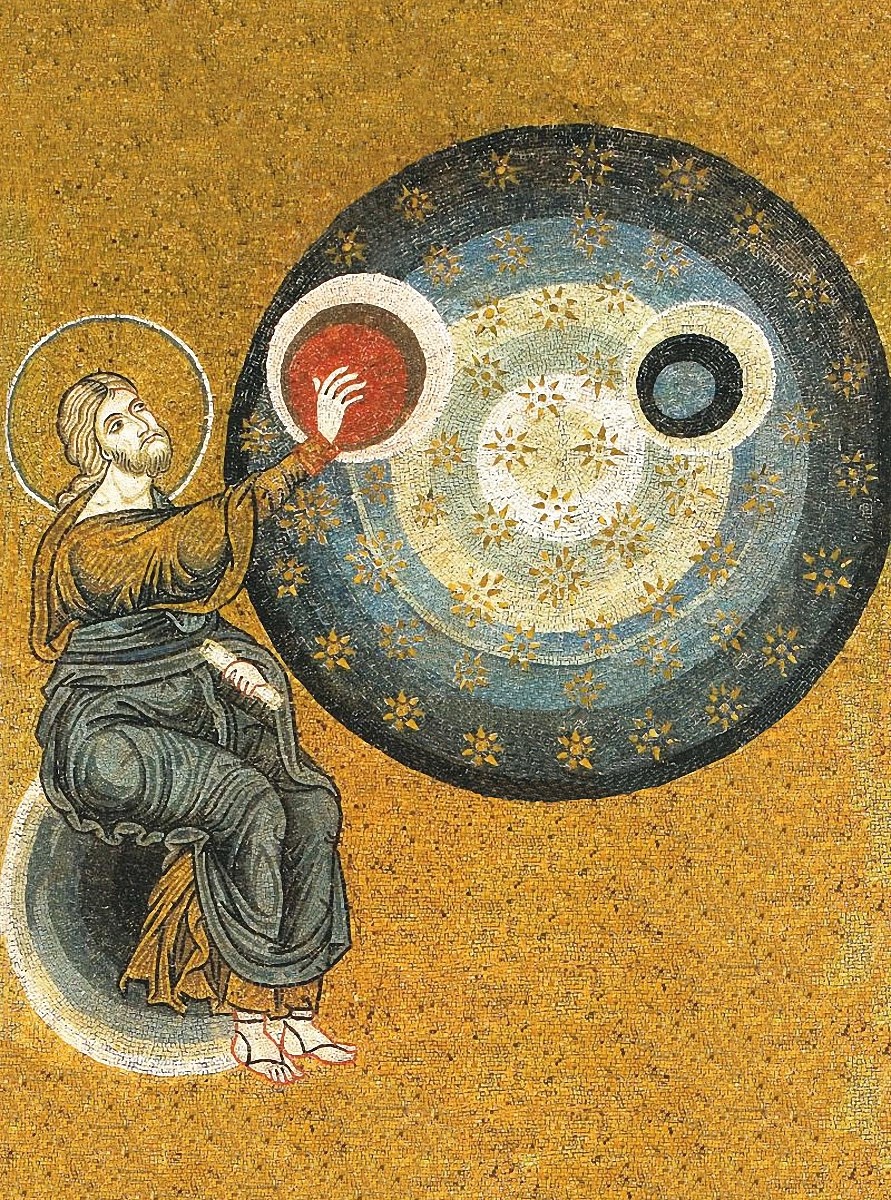
Mosaico di Monreale
2. MOSAIC WITH THE CREATION OF ASTERS (c. 1174)
In the mosaic of Monreale Cathedral, God is depicted creating the lights in the sky on the fourth day of creation. These are the lights that can separate day from night and allow us to distinguish the different seasons. In addition to the Sun and Moon, God places the stars in the sky, while in his right hand he holds the scroll of the Law.
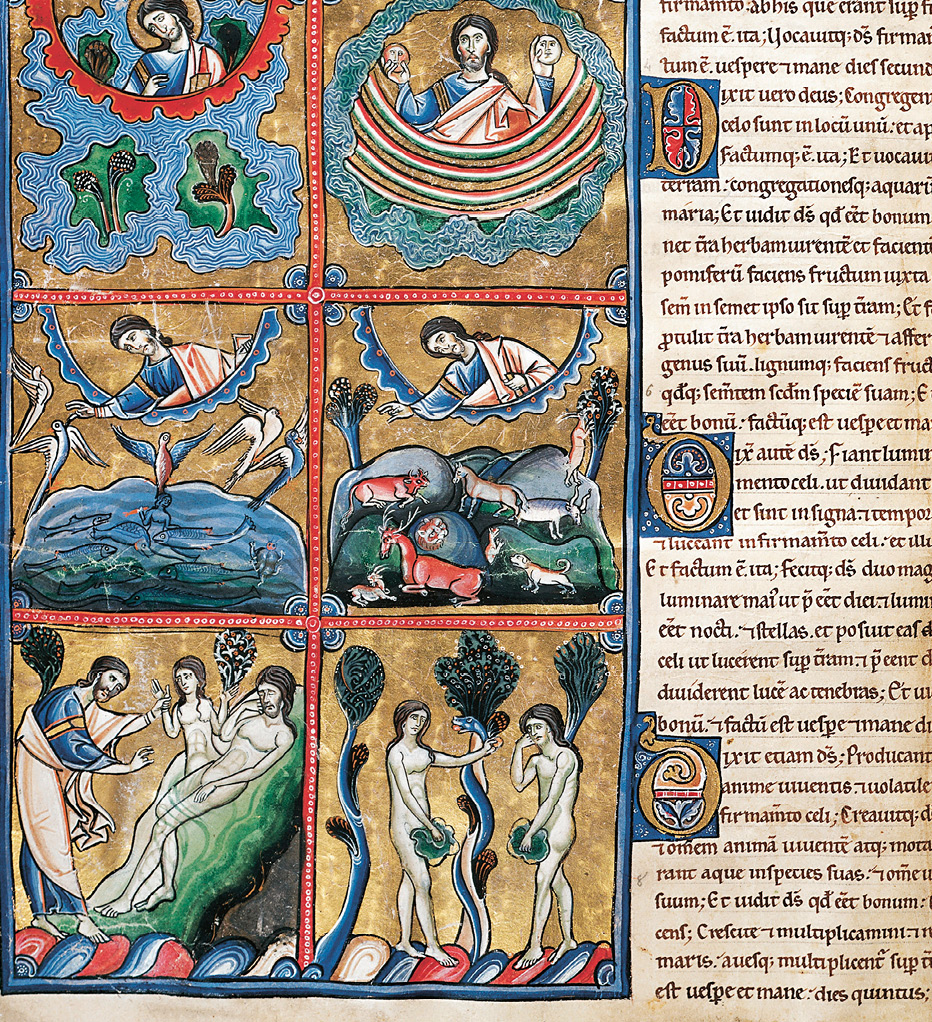
Miniatura della creazione del mondo
3. THE CREATION OF THE WORLD (late 12th cent.)
This miniature from the Bible de Souvigny, kept at the Library of Moulins, France, describes the creation of the world in seven episodes.
The miniaturist is fairly faithful to the biblical text but in the depictions of the seventh and eighth days he takes artistic liberties.
In fact on the seventh day he places the creation of Adam and Eve, whereas according to the Bible on that day God would have rested. On the eighth day the miniaturist depicts original sin and Eve is seen offering the forbidden fruit to Adam, as suggested by the serpent.
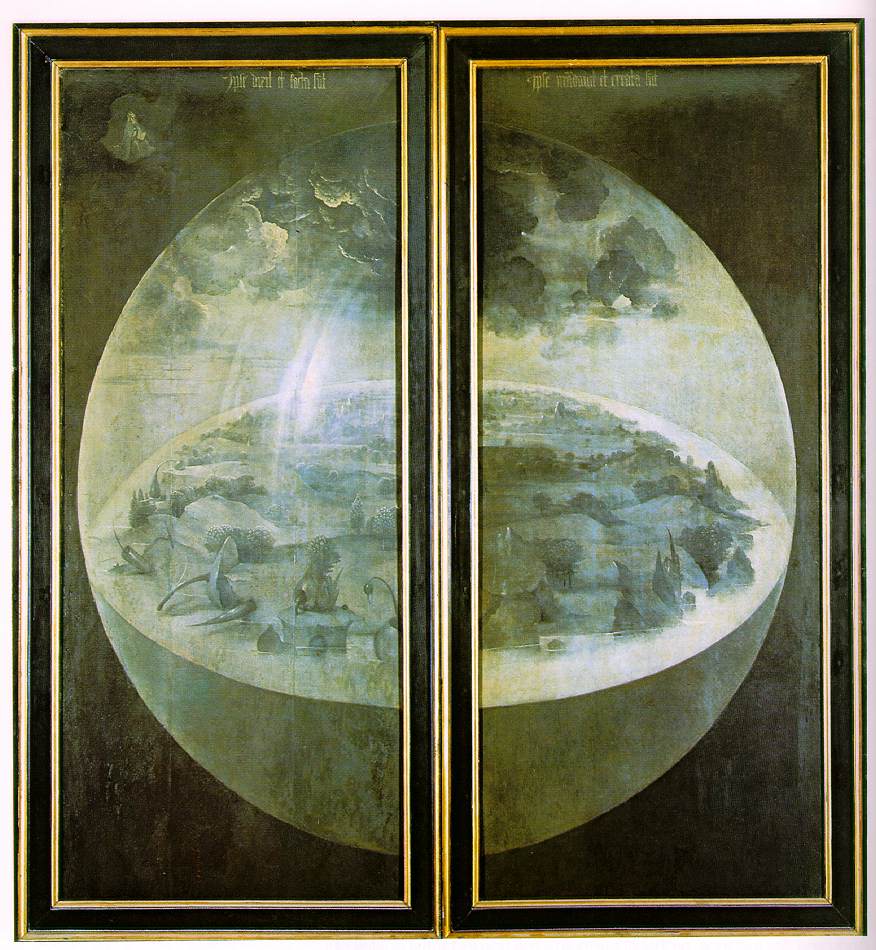
H. Bosch, il mondo nel terzo giorno della creazione
4. HIERONYMUS BOSCH,THE WORLD ON THE THIRD DAY OF CREATION (1503-1504)
The work is part of Bosch’s famous Garden of Delights Triptych and is the decoration of the outer wings, visible only when the Triptych is closed.
On the top of the left compartment is the biblical quotation taken from the Psalms: “Ipse dixit et facta sunt” (he says and it is done). On the right, however, appears another quote taken from the Psalms, “Ipse mandavit et creata sunt” (he commands and everything exists).
Within a glimpse of clouds is seen the Creator with a tiara and beard. He seems defiladed and in the background compared to the whole scene in which the globe is placed in the center. Instead, the world is placed inside a crystal ball, a symbol of the fragility of the universe.
Earth appears as a planet populated only by plants and formations of uncertain origin, perhaps elements between the vegetable and the mineral.
The world represented by Bosch predates the creation of animal forms. It is the moment when God, as recounted in Genesis, gathers the waters below the vault of heaven so that the earth appears.
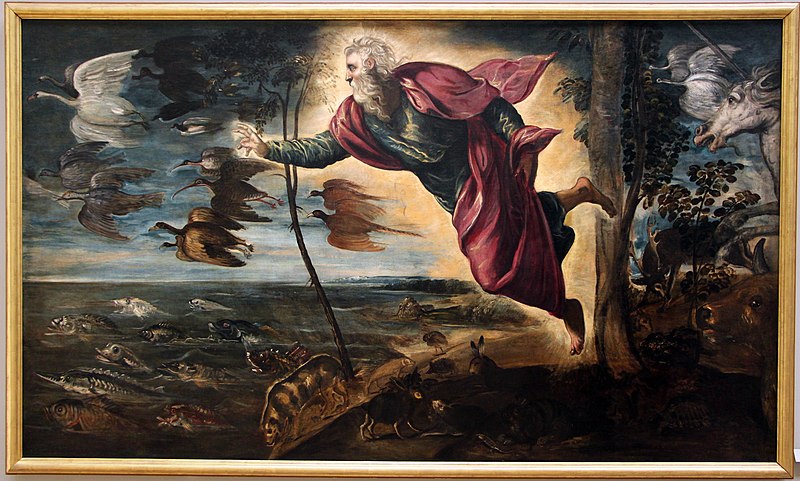
Tintoretto, la creazione egli animali
5. TINTORETTO, THE CREATION OF ANIMALS (c. 1550)
Tintoretto’s work, preserved at the Gallerie dell’Accademia in Venice, depicts God on the fifth day of the creation of the world blessing the fish in the sea and the birds in the sky, newly created.
God appears in flight behind the birds distinguished by their species and above the fish swimming in the sea.
Behind God are depicted the animals that inhabit the Earth.
The whole scene appears fast. Birds seem to dart through the sky and fish seem to dart through the water. God himself appears in very fast flight, as if there is a wild rush of animals of all species, rushing to populate the Earth and its elements.

